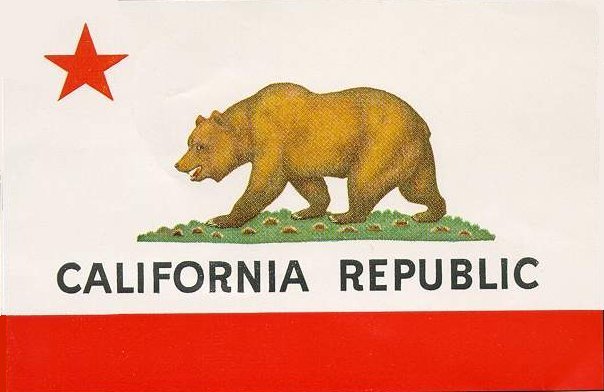 Note to the reader:
Note to the reader:
The essay below represents an attempt to translate into practical advice some research that found that effective teachers have a deep understanding of the disciplinary practices that they are expected to teach. As obvious as that may seem, many teacher-preparation programs focus on "subject matter" competency, rather than disciplinary competency - a fundamental distinction. Thanks to the T.N.E. effort here on campus, there has been a concerted effort to address this issue. The essay below is a step in that direction.
What does it mean to think historically?
[draft ]
Flannery Burke and Thomas Andrews
CSUN Department of History
Introduction
When we started working on Teachers for a New Era, a Carnegie-sponsored initiative designed to strengthen teacher training, we thought we knew a thing or two about our discipline. As we began reading such works as Sam Wineburg’s Historical Thinking and Other Unnatural Acts, however, we encountered an unexpected challenge.[i] If our understandings of the past constituted a sort of craft knowledge, how could we distill and communicate habits of mind we and our colleagues had developed through years of daily practice, apprenticeship, and guild membership to university students so that they, in turn, could impart these habits in K-12 classrooms?
In response, we developed an approach we call the “5 C’s of historical thinking.” The concepts of change over time, causality, context, complexity, and contingency, we believe, together describe whatever foundations historians share--the questions historians seek to answer, the arguments we make, and the debates in which we engage. These ideas are hardly new to professional historians. But that is precisely their point: To make our implicit ways of thought explicit to the students and teachers whom we train. The 5 C’s do not encompass the universe of historical thinking, yet they do provide a remarkably useful tool for helping students at practically any level learn how to formulate and support arguments based on primary sources, as well as to understand and challenge historical interpretations related in secondary sources. In this article, we define the 5 C’s and explain how each concept helps us to understand the past, reserving illustrative classroom case studies for a companion essay. Our approach is necessarily broad and basic, characteristics well suited for a foundation upon which we invite our colleagues from kindergartens to research universities to build.
Change Over Time
The idea of change over time is perhaps the easiest of the C’s to grasp. Students readily acknowledge that we employ and struggle with new technologies today that our forebears did not, that we live by different laws, and that we enjoy different cultural pursuits. Moreover, students also note that some aspects of life remain the same across time. Many Europeans celebrate many of the same holidays that they did three or four hundred years ago, for instance, often using the same rituals and words to mark a day’s significance. Continuity thus comprises an integral part of the idea of change over time.
Context
Some things change, others stay the same-- not a very interesting story but reason for concern since history, as the best teachers will tell you, is about telling stories. Good story telling, we contend, builds upon an understanding of context. Given young people’s fascination with narratives and their enthusiasm for imaginative play, pupils (particularly elementary school students) often find context the most engaging element of historical thinking. As students mature, of course, they recognize that the past is not just a playful alternate universe. Working with primary sources, they discover that the past makes more sense when they set it within two frameworks. In our teaching, we liken the first to the floating words which roll across the screen at the beginning of every “Star Wars” film. This kind of context sets the stage; the other helps us to interpret evidence concerning the action that ensues. Texts, events, individual lives, collective struggles—all develop within a tightly interwoven world.
Historians who excel at the art of storytelling often rely heavily upon context. Jonathan Spence’s Death of Woman Wang, for example, skillfully recreates seventeenth-century China by following the trail of a sparsely documented murder. To solve the mystery, students must understand the time and place in which it occurred. Laurel Thatcher Ulrich brings colonial New England to life by concentrating on the details of textile production and basket making in Age of Homespun. College courses regularly use the work of both authors because they not only spark student interest, but also hone students’ ability to describe the past and identify distinctive elements of different eras. [ii]
Causality
Historians use context, change over time, and causality to form arguments explaining past change. While scientists can devise experiments to test theories and yield data, historians can not alter past conditions to produce new information. Rather, they must base their arguments upon the interpretation of partial primary sources that frequently offer multiple explanations for a single event. Historians have long argued over the causes of the Protestant Reformation or World War I, for example, without achieving consensus. Such uncertainty troubles some students, but history classrooms are at their most dynamic when teachers ask pupils to evaluate the contributions of multiple factors in shaping past events, then to argue persuasively for the primacy of some causes over others.
Contingency
Contingency may be the most difficult of the C’s. To argue that history is contingent is to claim that every historical outcome depends upon a number of prior conditions; that each of these prior conditions depends, in turn, upon still other conditions; and so on. The world, in other words, is a magnificently interconnected place. Change a single prior condition, and any historical outcome could have turned out differently. Lee could have won at Gettysburg, Gore might have won in Florida, China might have inaugurated the world’s first industrial revolution.
Contingency can be an unsettling idea--so much so that people in the past have often tried to mask it with myths of national and racial destiny. The Pilgrim William Bradford, for instance, interpreted the decimation of New England’s native peoples not as a consequence of smallpox, but as a literal godsend.[iii] Two centuries later, American ideologues chose to rationalize their unlikely fortunes—from the purchase of Louisiana to the discovery of gold in California—as their nation’s “Manifest Destiny.” Historians, unlike Bradford and the apologists of westward expansion, look at the same outcomes differently. They see not divine fate, but a series of contingent results possessing other possibilities.
Contingency demands that students think deeply about past, present, and future. It offers a powerful corrective to teleology, the fallacy that events pursue a straight-arrow course to a pre-determined outcome, since people in the past had no way of anticipating our present world. Contingency also reminds us that individuals shape the course of human events. What if Karl Marx had decided to elude Prussian censors by emigrating to the United States instead of France, where he met Frederick Engels? To assert that the past is contingent is to impress upon students the notion that the future is up for grabs, and that they bear some responsibility for shaping the course of future history.
Complexity
Moral, epistemological, and causal complexity distinguish historical thinking from the conception of “history” held by many non-historians.[iv] Re-enacting battles and remembering names and dates require effort but not necessarily analytical rigor. Making sense of a messy world that we cannot know directly, in contrast, is more confounding but also more rewarding. Chronicles distill intricate historical processes into a mere catalogue, while nostalgia conjures an uncomplicated golden age that saves us the trouble of having to think about the past. Our own need for order can obscure our understanding of how past worlds functioned and blind us to the ways in which myths of rosy pasts do political and cultural work in the present. Reveling in complexity rather than shying away from it, historians seek to dispel the power of chronicle, nostalgia, and other traps that obscure our ability to understand the past on its own terms.
Conclusion
Our experiments with the 5 C’s have confronted us with several challenges. These concepts offer a fluid tool for engaging historical thought at multiple levels, but they can easily degenerate into a checklist. Students who favor memorization over analysis seem inclined to recite the C’s without necessarily understanding them. Moreover, as habits of mind, the 5 C’s develop only with practice. Though primary and secondary schools increasingly emphasize some aspects of these themes, particularly the use of primary sources as evidence, more attention to the 5 C’s with appropriate variations over the course of K-12 education would help future citizens not only to care about history, but also to think about it. It is our hope that this might help students to see the past not simply as prelude to our present, nor a list of facts to memorize, a cast of heroes and villains to watch, nor as an itinerary of places to tour, but rather as an ideal field for thinking long and hard about important questions.
____
i. Sam Wineburg, Historical Thinking and Other Unnatural Acts: Charting the Future of Teaching the Past (Philadelphia: Temple University Press, 2001).
ii. Jonathan D. Spence, Death of Woman Wang (New York: Viking, 1978); Laurel Thatcher Ulrich, The Age of Homespun: Objects and Stories in the Creation of an American Myth (New York: Knopf, 2001).
iii William Bradford, Of Plymouth Plantation, ed. Samuel Eliot Morison (New York: Random House, 1952).
iv Roy Rosenzweig and David Thelen, The Presence of the Past: Popular Uses of History in American Life (New York: Columbia University Press, 1998).
 Note to the reader:
Note to the reader: 
